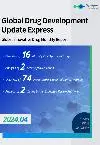Providers say they need an extra year, clearer guidance to meet HHS' looming info blocking requirements
27 Sep 2022

Preview
Source: FierceHealthcare
Providers—who already had a tough time with last year’s more limited data blocking requirements—wrote that the still-unclear definition of electronic health information has led to “widely divergent approaches” in how stakeholders are interpreting which data qualify.
Citing widespread confusion over upcoming federal information blocking requirements, hospitals, medical groups and long-term care organizations have asked the Department of Health and Human Services (HHS) to push back its Oct. 6 compliance deadline by a full year.
Ten major professional and trade organizations wrote in a Monday letter that their members are “making every feasible effort” to prepare for the deadline.
However, the groups say it’s “evident” from their conversations with individual healthcare provider organizations, clinicians and even vendors that the industry is “not fully prepared for the Oct. 6 deadline.”
“Despite our best efforts to educate our members, significant knowledge gaps and confusion still exist within the provider and vendors communities with respect to implementation and enforcement of information blocking regulations,” the American Medical Association, the American Hospital Association, the College of Healthcare Information Management Executives and others wrote to HHS Secretary Xavier Becerra (PDF). “Given the great importance of these policies, we want to make sure that they are implemented as smoothly and successfully as possible—for both patients and the clinicians and providers who care for them.”
The Oct. 6 regulations broaden the scope of information blocking rules put into effect in April 2021 that required health IT vendors, providers and health information exchanges to enable patients to access and download their health records with third-party apps. Under the rule, providers can't inhibit the access, exchange or use of health information unless the data fall within eight exceptions.
Without postponement, the definition of electronic health information in the 21st Century Cures Act will expand to include all electronic protected health information that a patient has the right to access under the Health Insurance Portability and Accountability Act.
Providers—who already had a tough time with last year’s more limited requirements—wrote that the still-unclear definition of electronic health information has led to “widely divergent approaches” in how stakeholders are interpreting which data qualify. There is also “significant confusion” surrounding the eight information blocking exceptions and insufficient guidance on protecting sensitive health records, such as those related to substance use disorder or reproductive information, the groups wrote.
“We continue to monitor and review ONC’s frequently asked questions, however, many of the questions we are raising are not clearly answered,” they wrote.
The professional organizations said their members’ compliance is contingent on vendor readiness that so far appears to be falling behind schedule. There’s also a contrast between providers’ Oct. 6 deadline and the later cutoffs designated for certified vendors, “which is causing confusion and limitations on sharing of [electronic health information],” the groups wrote.
Similar to an August warning letter penned by 28 health IT professional associations and other stakeholders, the providers told HHS to ramp up its outreach and education efforts surrounding the new guidelines. Best practices, implementation guides and other real-world guidance are especially needed by smaller or less-resourced organizations whose awareness of the impending requirements “remains very low, and [relies] heavily on their vendors,” the groups wrote.
The organizations paired their call for delay with a request that HHS first issue corrective action warnings to noncompliant providers rather than immediate monetary disincentives or formal investigation.
“We remain steadfast in our commitment to be partners with our patients and facilitate access to their records; the need for more time to ensure all providers and clinicians understand the policies, are prepared to meet them and have the technology to support these policies are critical,” they wrote.
The 10 organizations that signed on to the letter were:
America’s Essential Hospitals
American Academy of Family Physicians
American Health Care Association
American Hospital Association
American Medical Association
Association of American Medical Colleges
Federation of American Hospitals
Medical Group Management Association
National Association for the Support of Long Term Care
College of Healthcare Information Management Executives
For more details,please visit the original website
The content of the article does not represent any opinions of Synapse and its affiliated companies. If there is any copyright infringement or error, please contact us, and we will deal with it within 24 hours.
Organizations
Indications
Targets
-Drugs
-Hot reports
Get started for free today!
Accelerate Strategic R&D decision making with Synapse, PatSnap’s AI-powered Connected Innovation Intelligence Platform Built for Life Sciences Professionals.
Start your data trial now!
Synapse data is also accessible to external entities via APIs or data packages. Leverages most recent intelligence information, enabling fullest potential.




